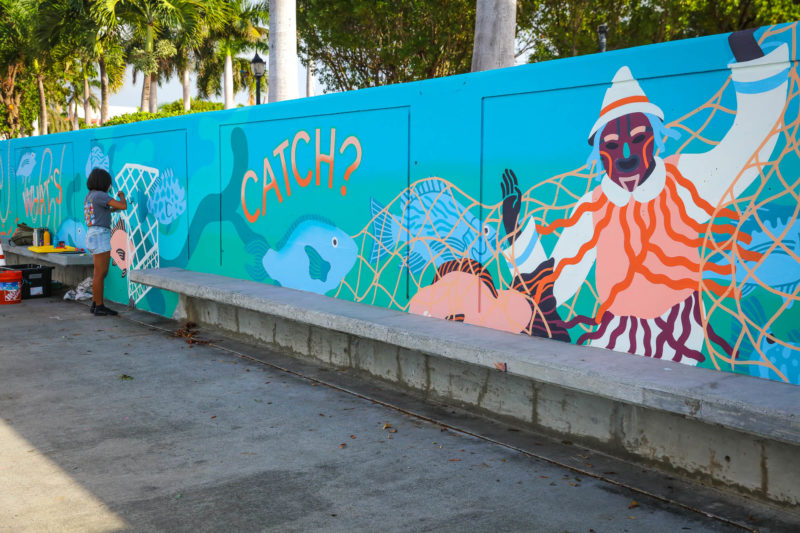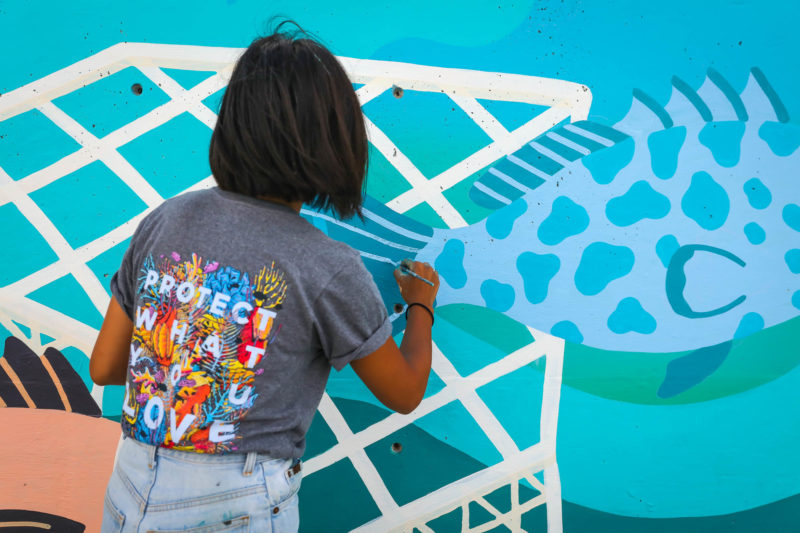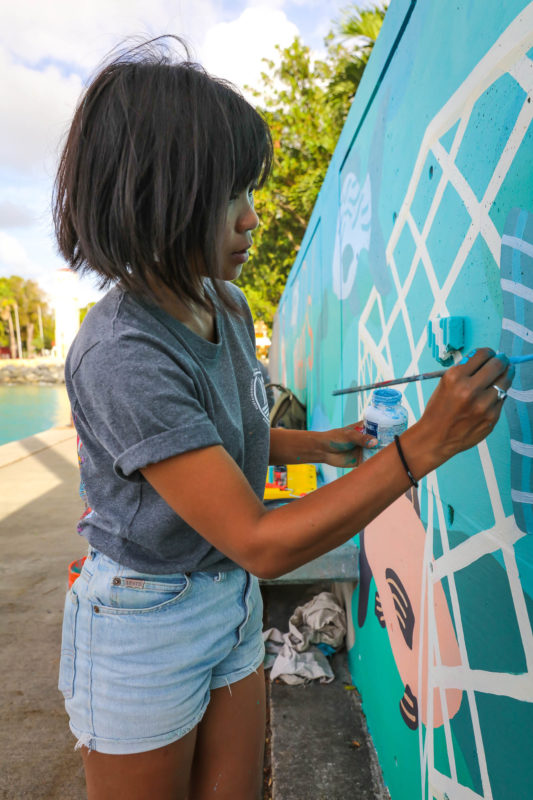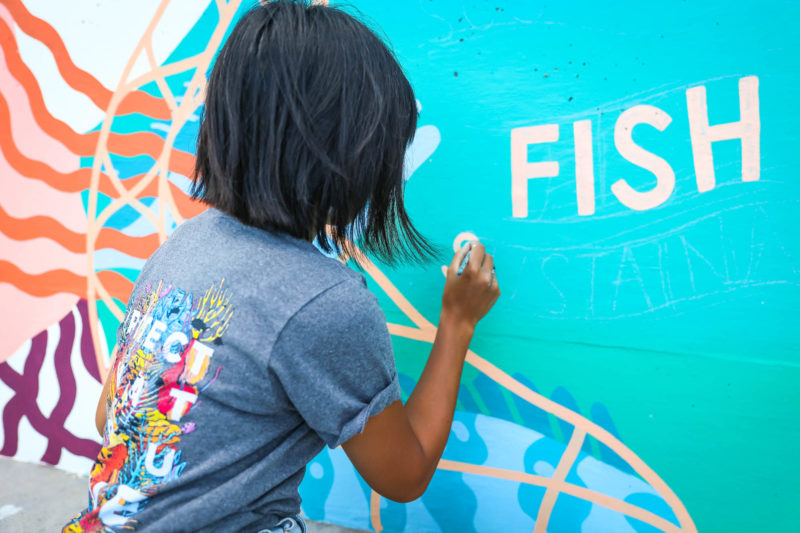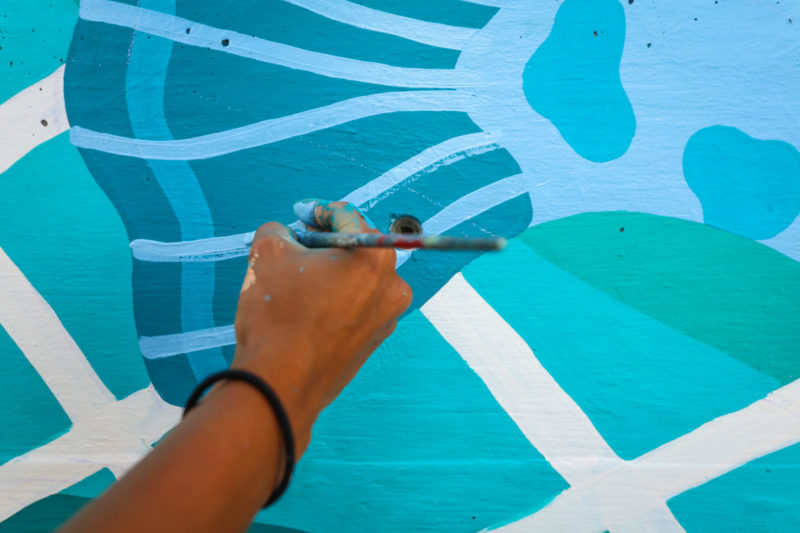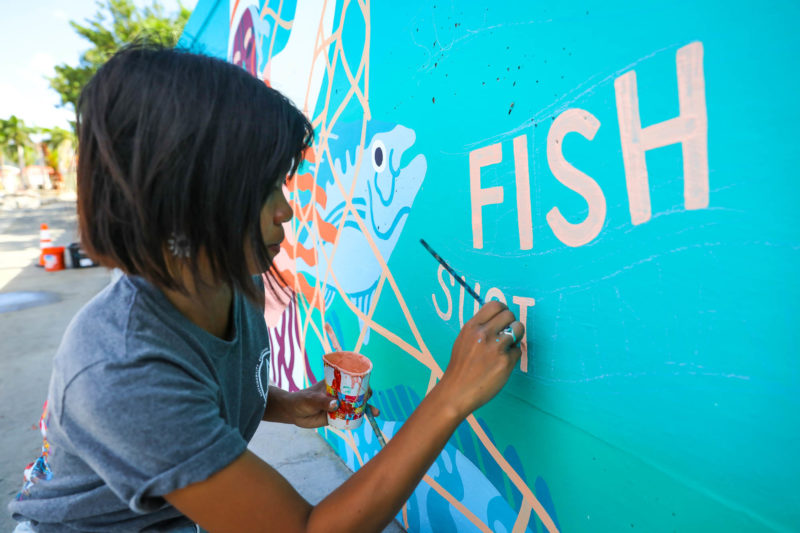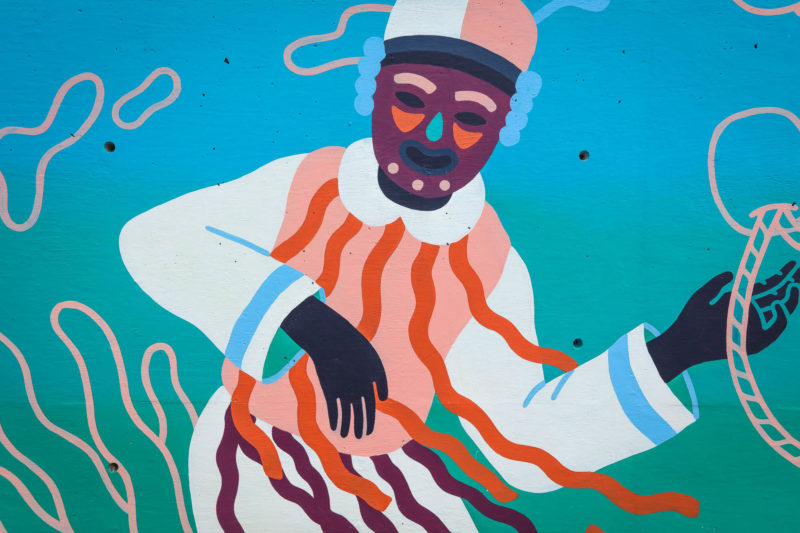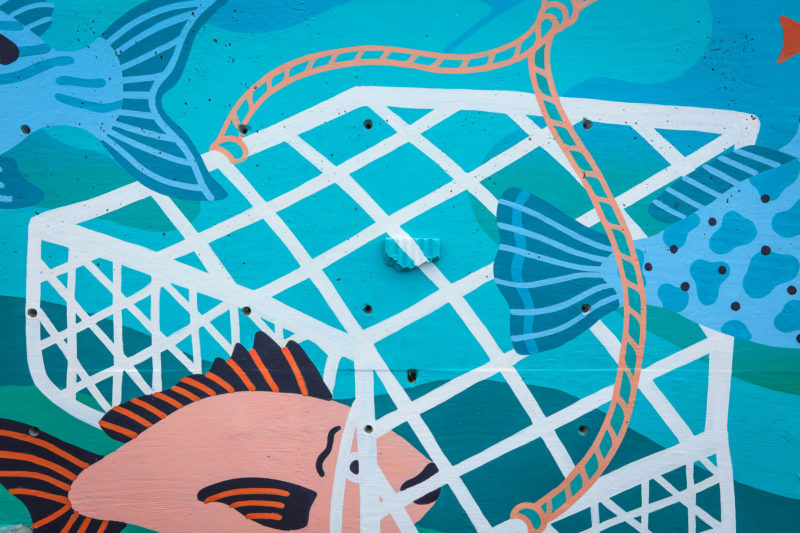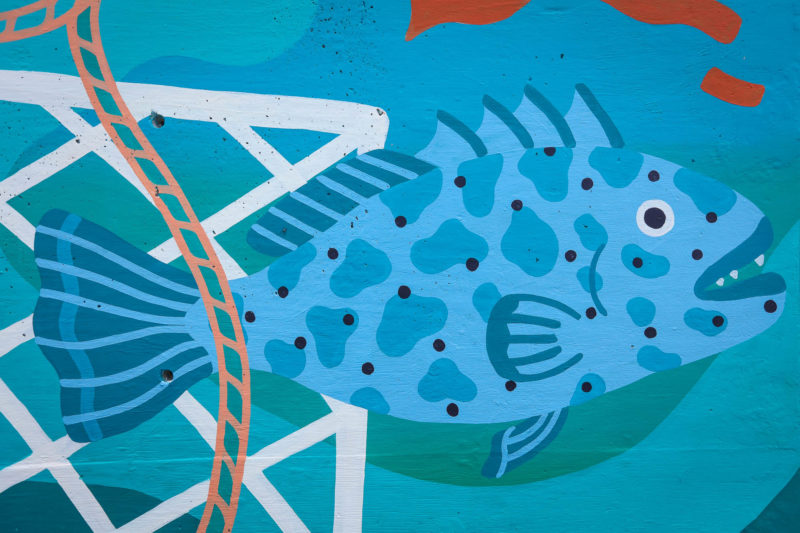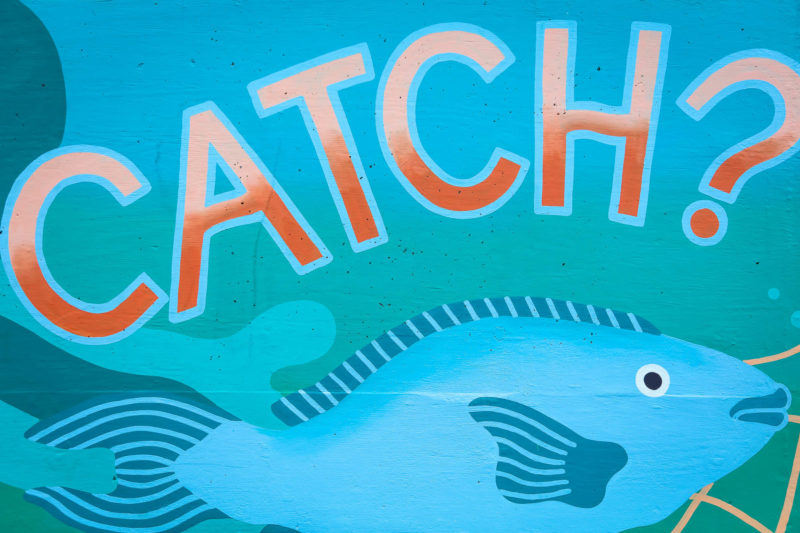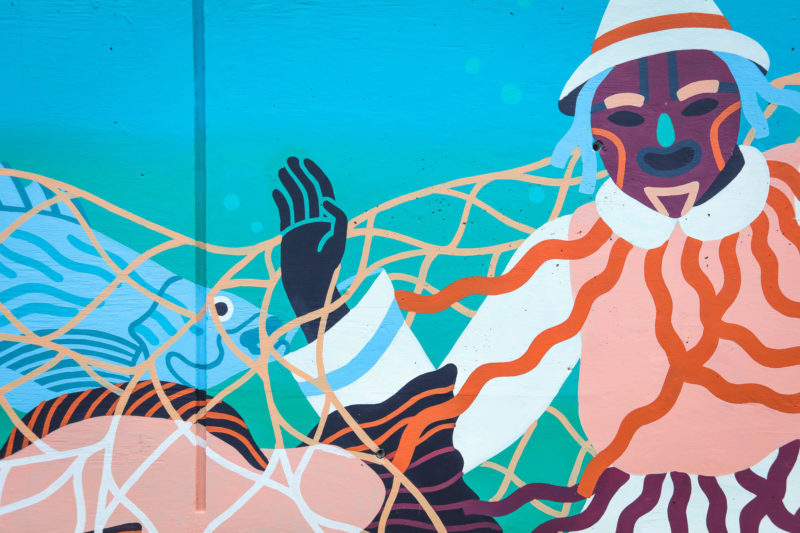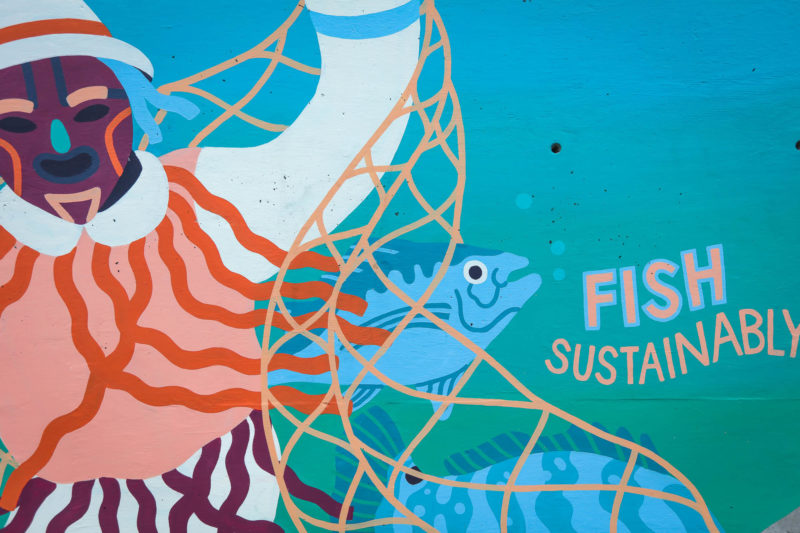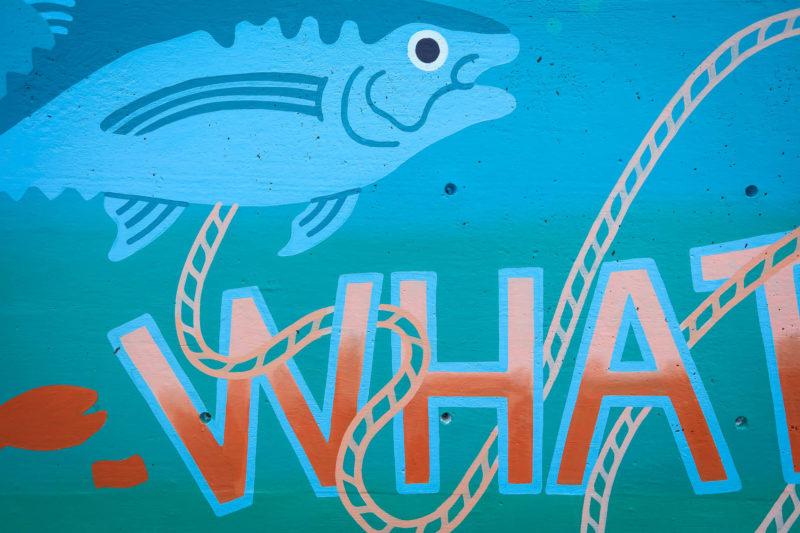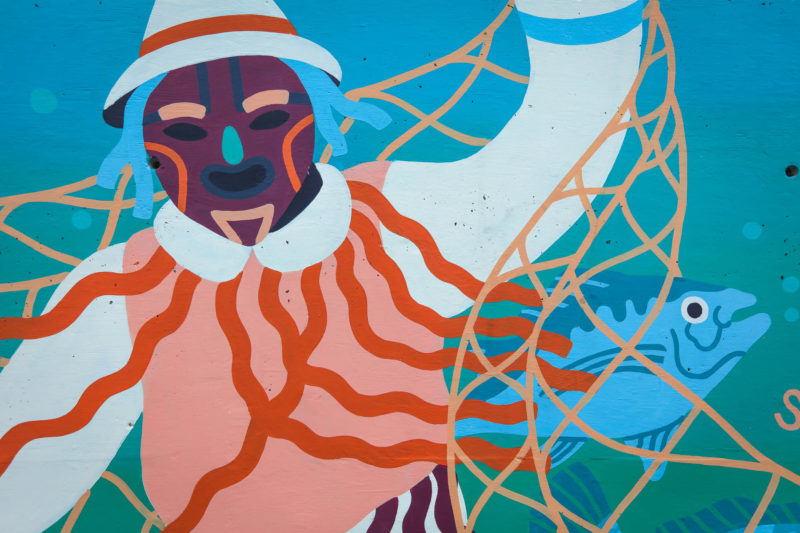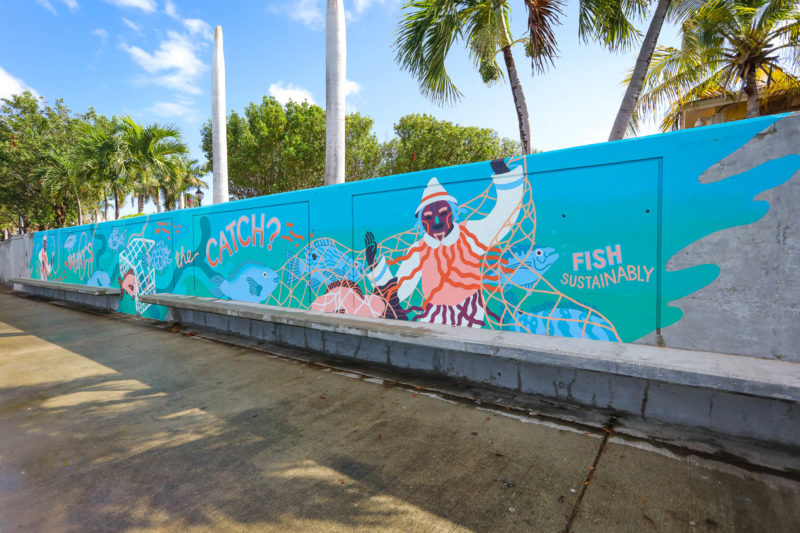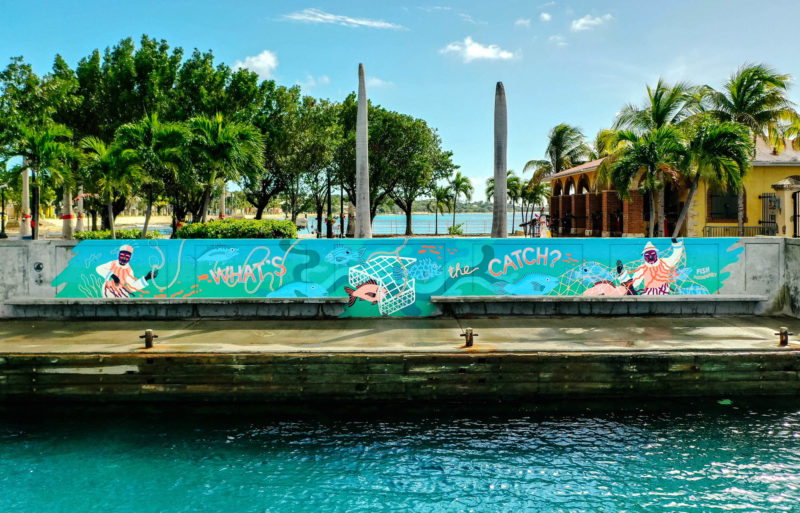Story Behind This Mural
Artist Statement
Highlighting the importance of sustainable fishing methods, two moko jumbies face off in a display of fishing: one using a net while the other uses a traditional fish pot/trap. The net results in a greater catch than the fish trap, but at what cost?The extreme effectiveness of net fishing has led to more fish being taken out of the seas than is needed, severely depleting the fish stocks. In a place where locals pass by to fish every day, I want to question the convenience and ease of newer fishing methods that have replaced older traditional and more sustainable practices.
Moko jumbies, a cultural icon of St. Croix, are used to playfully communicate this issue in an informal way. Using a fish pot comes with a smaller catch, but the moko jumbie is able to move more freely while a sufficient supply of fish are left to replace the ones that are caught.
The island’s culture is intertwined with the livelihood of fishing, raising awareness on the importance of preserving traditions. I hope that in questioning the long term drawbacks of seemingly ideal situations, more informed decisions can be collectively made to move forward into a sustainable future.
The Focus
Sustainable fishing and traditional local fishing methodsTake Action
If you do eat seafood (marine life), you can be a responsible consumer by:
- Choosing to eat species that are lower on the foodchain. Think sardines over tuna.
- Refer to consumer guides such as Seafood Watch and only eat species that are considered sustainable.
- Look out for catch harvested using non-commercial, more sustainable fishing methods such as spearfishing and pole-and-line.
